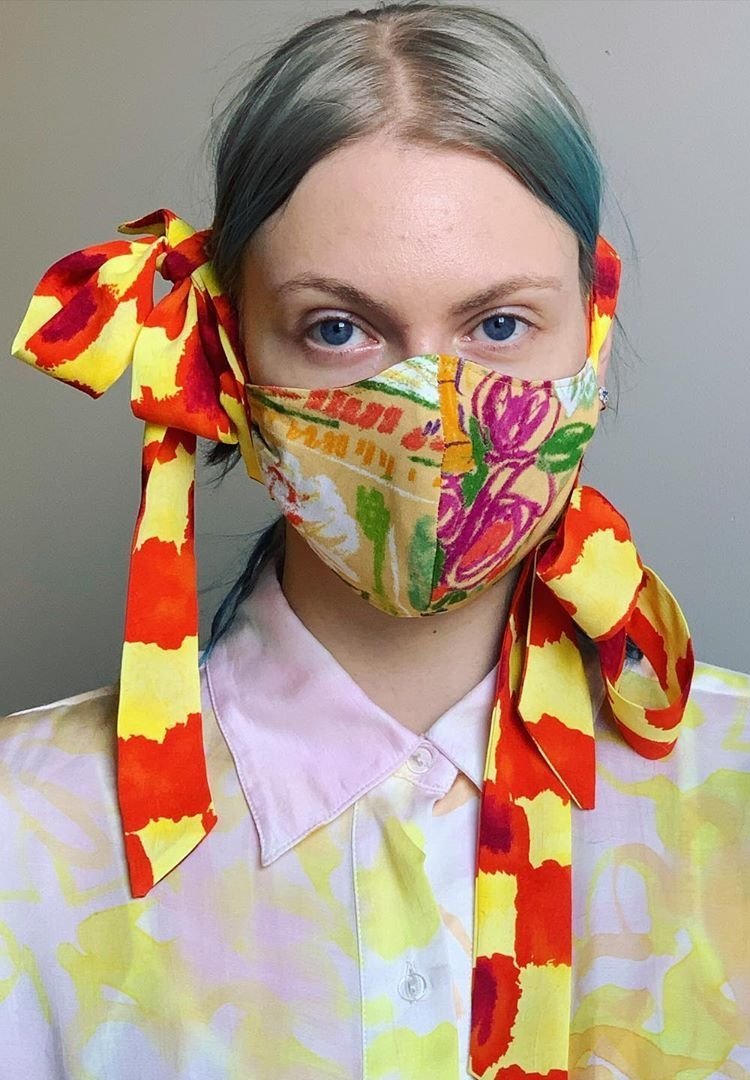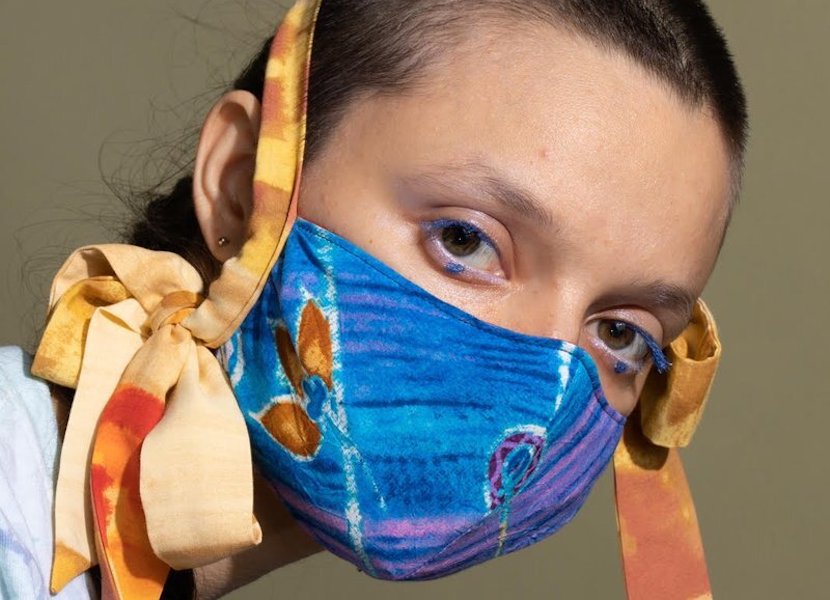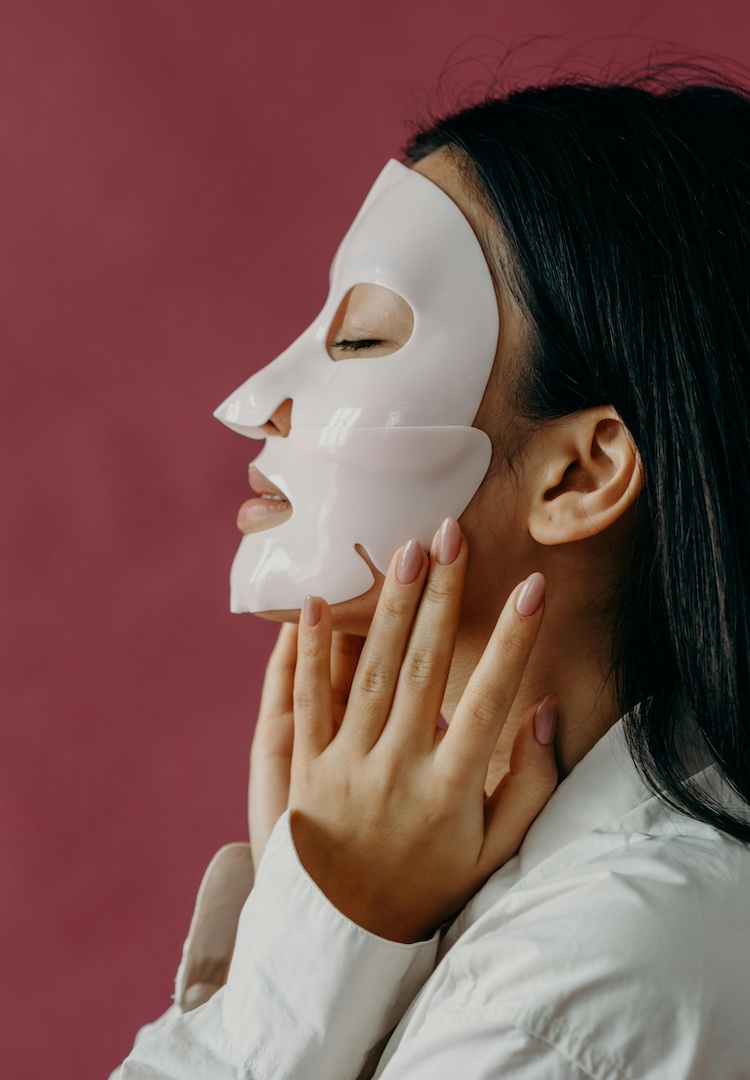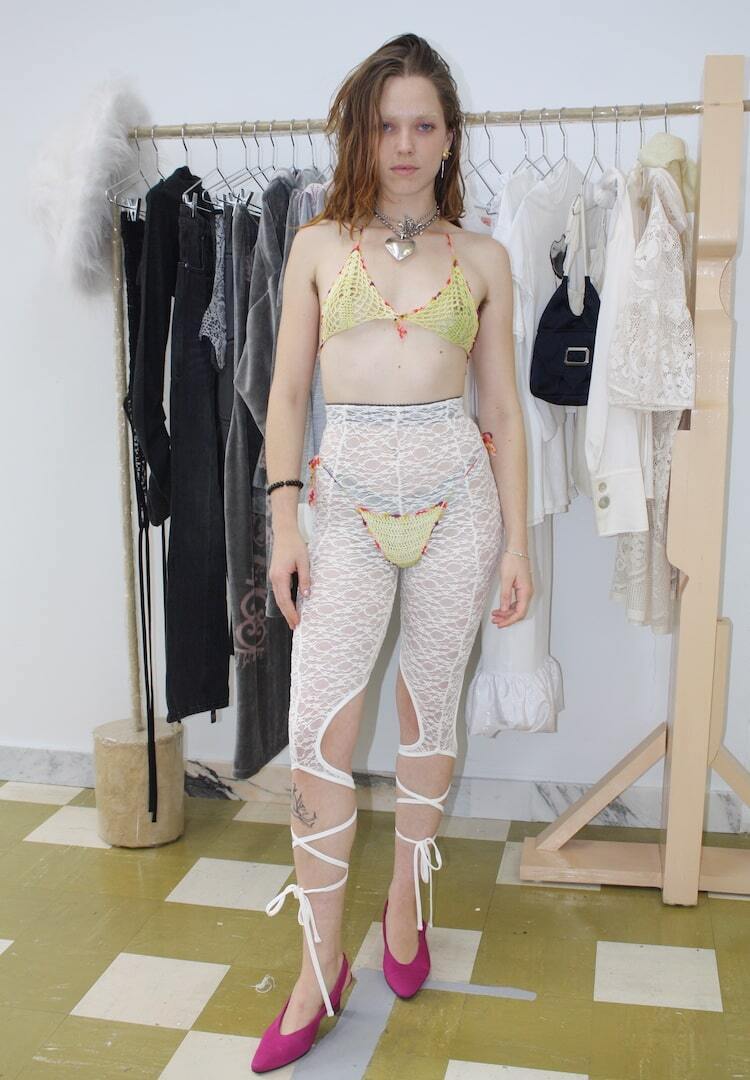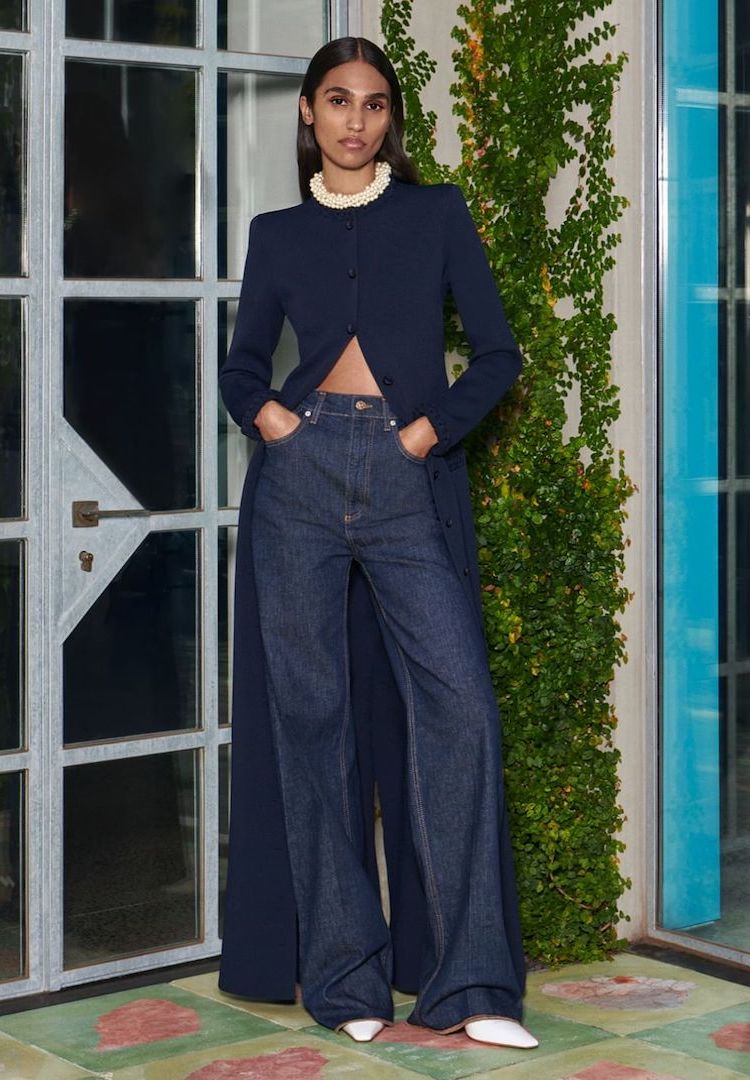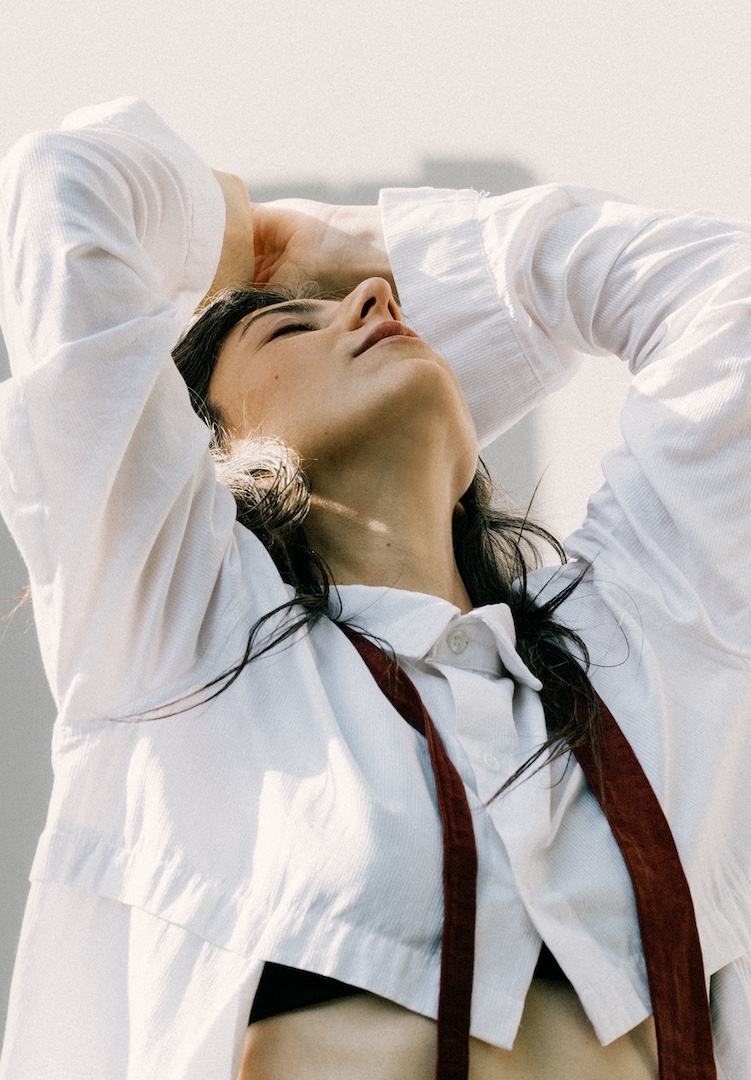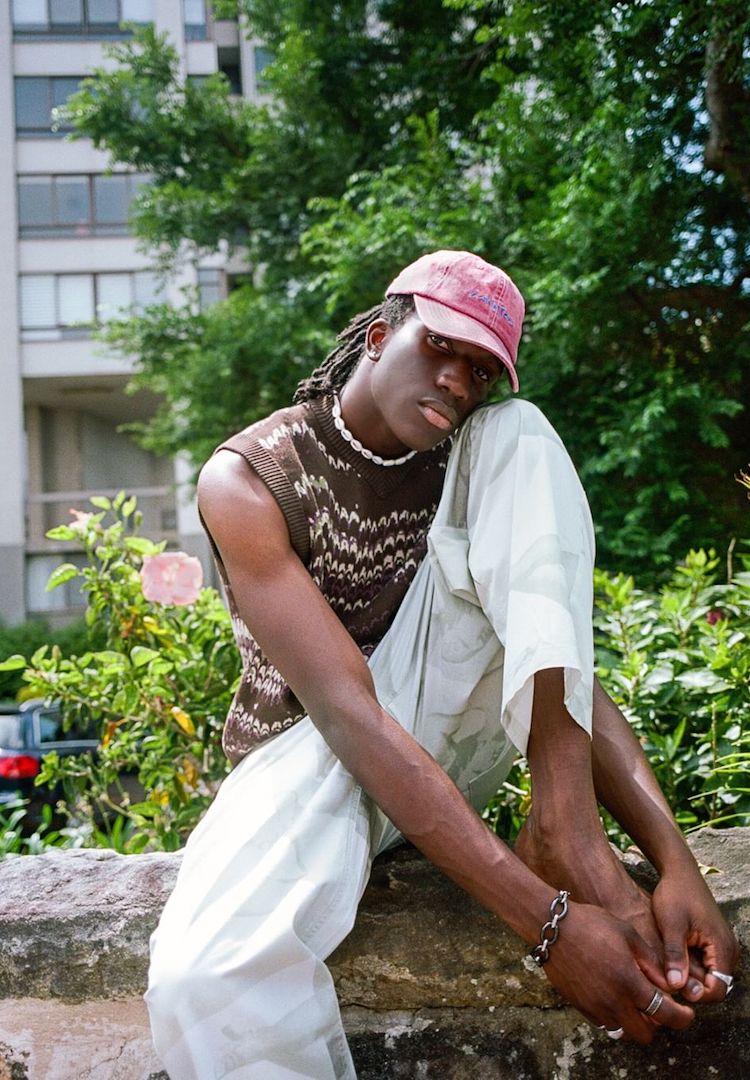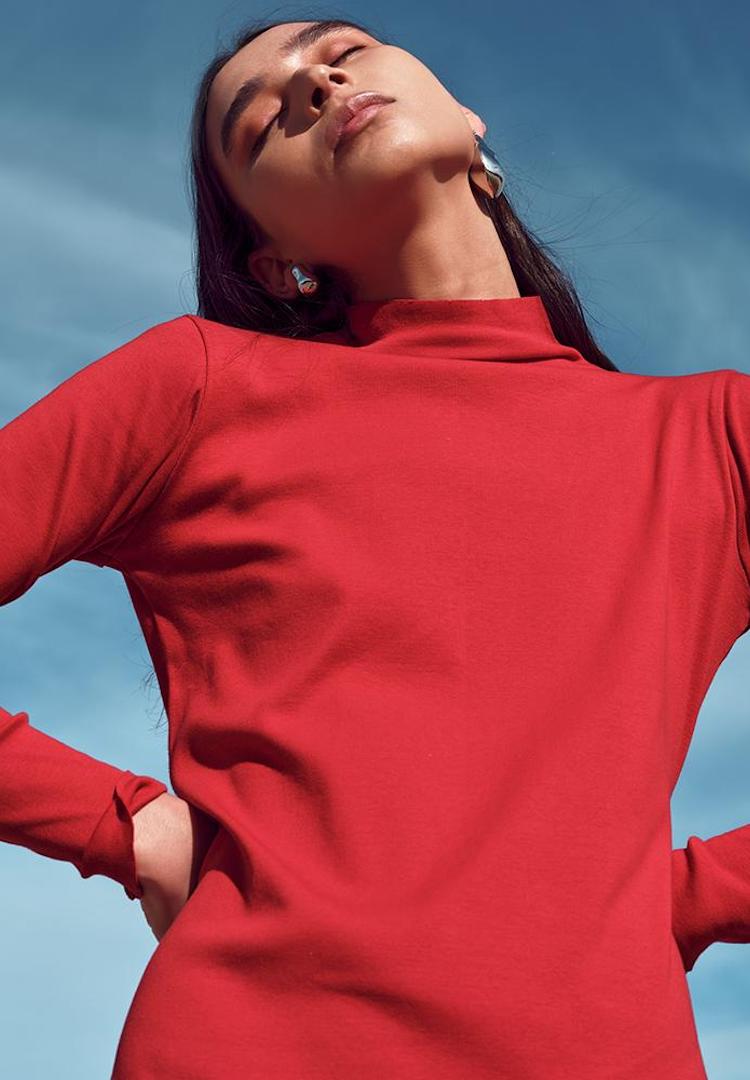What’s the deal with fashion brands making masks?
IMAGES VIA COLLINA STRADA
WORDS BY JASMINE WALLIS
Once only seen in the fashion world through the lens of streetwear, the surgical mask is now permeating our lives and handbags.
In the last few years, the surgical mask has been on the rise as a futuristic (if slightly dystopian) fashion accessory.
They were spotted as a new trend in places like Japan and Hong Kong back in 2015, are donned by streetwear fanatics in cities around the world, and a Gucci-branded surgical mask was even worn by Billie Eilish at the pre-pandemic 2020 Grammy Awards.
Back home, Australians were introduced to face masks as the new normal during the late 2019/early 2020 bushfires that ravaged the country.
The choking bushfire smoke motivated many to run to their local Bunnings for P2 respiratory face masks and for people with underlying health problems, the mask was a necessary everyday item for a while.
Only months later, however, as COVID-19 spreads across the globe, the surgical mask isn’t worn just to make a bold sartorial statement or ward off pollution; it’s to protect ourselves and others from a contagious new virus.
But as the demand increases, hospitals everywhere are dealing with a severe lack of personal protective equipment (PPE), the items worn in the workplace to prevent injury and infection. This includes surgical gowns, gloves, and properly fitted masks.
As a result, fashion brands have put up their hands to produce surgical masks for the general public so stockpiles can be saved for frontline healthcare workers. But is this ethical, or is it just another example of the failure of capitalism?
Are masks essential here?
In the past few months, the fashion industry around the globe has stepped up to help in the fight against COVID-19.
In the US, sustainable label Reformation has partnered with an initiative called L.A. Protects to produce non-medical grade masks for essential workers in the city.
Over in France, luxury conglomerate LVMH – owners of Fendi, Dior, Givenchy and more – announced that it’s supplying 40 million masks to help with the shortage.
Meanwhile, in the UK, Burberry’s Yorkshire factory is pivoting from checked luxury wear to PPE. These efforts are huge and make a big difference in countries where wearing a mask is a requirement when outside (America and Germany) and those that have been harder hit by COVID-19, like the UK.
Back home in Australia however, thanks to putting lockdown measures in place early and living thousands of kilometres away from the virus’s epicentres, we have seen a significantly lower number of cases and deaths, and have been told we don’t need to wear masks in public.
Even the Commonwealth Deputy Chief Medical Officer, Paul Kelly, said face masks were important protective equipment for health workers but were “not recommended for the Australian public”.
This is because wearing a surgical mask prevents you from spreading the virus if you’ve tested positive or if you’re asymptomatic. But with cases decreasing dramatically in Australia, the usefulness of a mask is being called into question, and their utility decreases even further if they’re not medically-graded.
According to the Department of Health, medically-graded masks like N95 respirators are single-use, disposable, fluid-resistant, use ear loops or ties to secure and are designed to form a very close seal around the nose and mouth.
They have been tested to ensure that they remove 95 per cent of solid and liquid aerosols and protect the wearer from airborne viruses such as COVID-19. This is why PPE is so essential for healthcare workers because the masks have been specifically designed and tested for this purpose.
So if they’re not critical for the general public to wear in Australia, why are fashion brands still trying to sell us face masks?
Pushing profits during a pandemic
When you get a combination of uncertainty within the public around rules and regulations coupled with fashion brands trying to stay afloat and make a profit during an economic crisis, the result can sometimes be a little tone-deaf.
We saw an example of this back in April when high-end Australian fashion label Natalie Rolt was slammed for selling cotton masks with the word ‘Together’ embroidered on the front for $30 a pop, with seemingly none of the money made going to the organisations that are in dire need of funding during this crisis.
Unsurprisingly, the label received backlash for capitalising on a global crisis and swiftly removed them from its website.
Likewise, a story published by American Vogue last week about the “most stylish masks to buy now”, which included a $100 USD Proenza Schouler satin mask and an $80 USD hand-embroidered Roopa Pemmaraju mask, felt a little out of touch considering many of these multi-million dollar brands are selling these masks purely for profit.
And that’s the key difference between brands that are adapting to the increased demand for masks in a considered manner, and ones that are simply trying to capitalise on a crisis that’s resulted in widespread poverty and loss of life – clarity regarding where their profits are going, if any are being made at all.
Many overseas brands, like Collina Strada, are including free masks with every purchase, while others are donating the entirety of profits made from their mask sales to organisations helping fight COVID-19.
While back home, there are some brands that have brazenly exploited this mask-shaped gap in the market, other local Australian brands are aiming to help their community by giving masks away for free.
Known for its championing of local manufacturing and sustainable practices, A.BCH founder Courtney Holm decided to make a difference in her local community.
Taking action as COVID-19 spread in mid-March, Courtney and her team debated whether or not the masks would be useful and within two weeks worked out a prototype that gives some level of protection.
Based on research from Cambridge, the A.BCH prototype aims to filter out 50 per cent of virus particles, so the masks aren’t technically medically-graded PPE.
Unlike other labels, however, A.BCH decided they didn’t want to sell a non-medically-graded mask as a stand-alone item in its store.
Instead, they have been giving the free masks away with every purchase made as well as giving the community access to a downloadable pattern for people to make at home if they’re not in a financial position to purchase clothing.
Speaking to Fashion Journal from her Melbourne studio as she was sewing the masks herself, Courtney said that they wanted to “do something that was helpful for people when things were feeling a little bit out of their control.”
This initiative has meant that during the shaky period A.BCH experienced during March and April, they could keep their sewers busy and not have to cut back on staff hours.
“The way we approached it was we didn’t necessarily want to make it a product that we were selling. We wanted it to be something that could, on one hand, keep our sewers making stuff while we were in a quiet period but then also be something that was really useful for the community.”
“We can still pay our sewers to keep doing their jobs because it means that every time we send out a mask we’re also making a sale,” she said.
When asked her thoughts on whether selling face masks during a viral pandemic was ethical, Courtney reiterated the confusion felt by consumers and producers alike.
“It’s complicated and I think it has to come down to each brand’s DNA and what is right for them. I don’t have anything against anyone selling them. No one’s forcing the public to buy them and if they do it’s because they think they need it and it would make them feel better.”
Fashion and innovation
As well as fashion labels designing their own cotton masks for the public, another area of the fashion industry has also been focusing on masks.
Dr Scott Mayson, Associate Dean of Research and Innovation in the School of Fashion and Textiles at RMIT, is heading up an initiative with the Federal Government to meet shortages of PPE during the pandemic.
RMIT was approached by the Australian Manufacturing Technology Institue Limited (AMTIL) to explore how to better design a simple and comfortable face mask utilising a wool blend material.
They were also asked to “consider how the mask would fit a variety of faces and to simplify the fitting and removal of the masks” for healthcare workers, an issue that has received global attention thanks to selfies from healthcare workers across the world suffering from pressure lines after hours of wearing PPE.
One interesting observation they found was that the majority of PPE is designed for a male face and it was “critical to design a hybrid mask that could adapt to a majority of female faces.”
Although not being designed for the general public, Dr Mayson and his team of fashion students have sewn 100 prototypes which are now in development with the CSIRO.
This shows that while some aspects of the fashion industry can be seen as unethical and capitalising on tragedy, it’s also vitally important for fashion to help in the innovation and design sphere during the fight against COVID-19.
“It is critical that the fashion and textiles industry and universities are able to rapidly provide research and design expertise in the development and application of new non-woven textiles,” says Dr Mayson.
Other innovations seen over the past few months within the Australian fashion industry have been the Happy Scrubs initiative which is giving away free scrubs for medical workers and Nobody Denim offering up its factory to produce PPE.
It’s clear that all of these initiatives have the medical and public’s best interests at heart – they’re not creating these masks to make a fashion statement or profit off a tragedy.
Face masks and the future
Like many issues related to COVID-19, face masks are an ethical grey area. While most Australians out in public aren’t wearing masks, Courtney says that the market will depend on what happens next.
“There could be a few more waves and I think if that happens then the face mask will probably become more of something people want to have to protect other people as a courtesy.”
Going forward, the face mask could also be seen as a necessary fashion item like the sun hat, in which case we may see an increase in fashion labels selling non-medically-graded masks to make a profit.
“It’s not really in our culture in Australia to wear a mask but it’s definitely in other cultures. It’s not really that crazy to think it could become part of ours too,” says Courtney.
Although there have been instances of some fashion labels being tone-deaf during the COVID-19 crisis, Dr Mayson says it “has shown us that we need to adapt the way we engage with society” and that “we’ll see more people wearing masks as we gradually shift away from restrictions, especially in confined spaces like public transport.”
At the moment it’s hard to say whether or not the face mask will become a permanent fixture of our everyday lives, but as social distancing and vigilant handwashing definitely are, some people may feel more comfortable wearing one and might want to own some that show off their personality.
“People will want to have more fashionable choices that match their daily look beyond the mint coloured surgical masks,” says Dr Mayson. “This is where fashion designers can be creative with additions to current PPE without sacrificing the intended function.”
Like with any purchase made at the moment we should be thinking critically about who made it, who is profiting from it, and its true function.
The face mask may become an essential fashion item in Australia in the future, but during the pandemic, it’s important to remember that they are needed to protect healthcare workers first and foremost and are not just an item to sell to make a social or sartorial statement.


